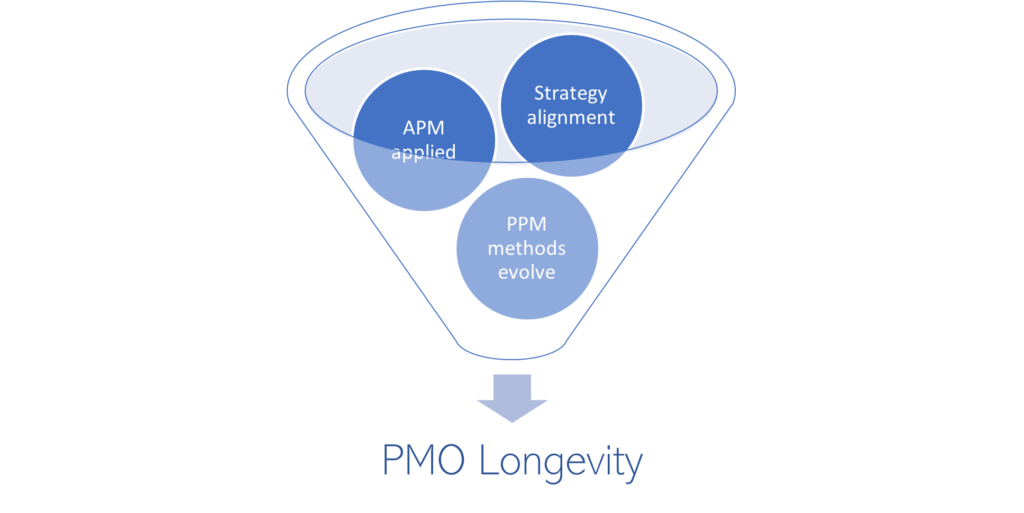The modern Project Management Office (PMO) is increasingly evolving beyond an administrative function to one that is strategic in nature and more closely aligned with the delivery of strategic business objectives. As the pace of business increases, and with it the expectation of faster returns on investment, the PMO plays a critical role in delivering business value.
But how can organisations preserve the effectiveness of their PMOs to ensure transparency and ease of use for future project managers and leaders? When we solve this problem, the PMO can enjoy continued success long after the original Exec who set up the PMO has moved on.
Align with business strategy, not administration
To guarantee success, a modern PMO should first and foremost be aligned to the strategy of the organisation with a focus on ensuring all delivery supports that strategy. A mature business should already have these goals clearly laid out, with everyone in the business working towards them. This alignment with the overarching goals of the business rather than purely with the immediate processes of projects not only reinforces the necessity for a PMO but also ensures that focus remains on strategic outcomes in a volatile environment, adapting to the changing needs of the business over time.
Adopt adaptive project management
To adapt to the ever-changing needs of a business, it is imperative that a structured, systematic approach to project management known as Adaptive Project Management (APM) is utilised. This framework helps to improve project decisions and processes based on data garnered from previous project decisions. When Adaptive Project Management is embedded into the PMO, conventional project and portfolio management methods are superseded, substituted with new agile methods that can be reset again when new data and information is acquired. This perpetual learning and review cycle keeps the PMO healthy and alive, placing it in tip-top shape for the next PM to enter its domain armed with the most relevant and applicable knowledge.

Have a sponsor, and form relationships with all executives
No PMO can achieve success and longevity without a clearly defined sponsor, preferably from the senior management team, who has full buy-in to the purpose and value of the PMO. When the PMO sponsor is seen to believe in the setup and willing to take on the responsibility of it, he or she will add credibility while earning respect for the PMO and the value it can add to the successful outcomes of projects helping to fulfill an organisation’s goals.
A sponsor is the PMO leader’s anchor, advocating for the organisation’s project culture and supporting team engagement and vision for project delivery. A PMO sponsor, while not responsible for managing individual project deliverables or for managing the project team, does need to understand all projects’ relationships to the organisation’s strategy and ensure the PMO leader and PMs can form strong relationships with their executive and senior stakeholders.
When the PMO is fully aligned with the executives, it can extract feedback based on outcomes and assist executives to make informed decisions about future projects. Visibility and a strong and enduring feedback loop are the most important benefits of a sponsor to ensure the PMO is meeting the needs of the organisation and ensuring PMO longevity.
Conclusion
Modern PMOs have evolved toward strategic alignment with business goals and must do so to adapt to the ever-changing goal posts of agile businesses. To sustain a PMO beyond the average 2-3 year lifespan, it is not enough for an organisation to set up a PMO for traditional administrative purposes and its own comfort level. Consideration must be given to the business value the PMO can drive and creating a sustainable function for future leaders and PMs so they can make a smooth transition into the PMO with minimal effort.
By embedding adaptive project management methods into the PMO, it can flex and adapt to changing business objectives, improve project decisions and use data from previous projects to continuously improve processes and business outcomes.
Finally, a PMO must seek a PMO sponsor at the executive level to instil visibility, confidence and credibility that will inevitably lead to an enduring feedback loop with PMs and the longevity of the PMO.



